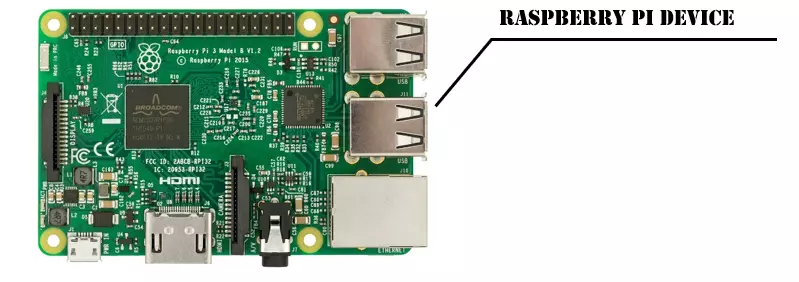Peripheral hardware refers to external devices that connect to a computer or other computational systems, enhancing their functionality or adding new features. These devices exist outside the computer’s central processing unit (CPU) and typically connect through various interfaces, such as USB ports, Ethernet cables, wireless connections, and more. Examples of peripheral hardware include devices like keyboards, computer mice, printers, external hard drives, USB flash drives, scanners, webcams, and monitors.
In today’s rapidly evolving technological landscape, peripheral hardware is an essential component of modern computing environments. These devices not only increase productivity and efficiency but can also become critical targets or vectors for cyber threats. Hackers often exploit vulnerabilities in peripheral devices to launch cyber attacks, bypassing traditional security measures. Understanding the role of peripheral hardware and ensuring its security is vital to preventing intrusion and maintaining the integrity of both individual and enterprise systems.
The Importance of Peripheral Hardware in Modern Computing
Peripheral hardware devices play a significant role in expanding the functionality of computers and other electronic devices. For instance, an external hard drive allows users to store large volumes of data without overburdening the computer’s internal storage. Similarly, printers and scanners enable businesses to handle documentation and communication seamlessly. These devices form a crucial bridge between the user and the system, enhancing the overall experience and making complex tasks more manageable.
However, with the rise of bring-your-own-device (BYOD) policies, peripheral hardware has become even more prevalent in both home and corporate environments. This increased usage, unfortunately, creates new security risks. Without proper monitoring, compromised peripheral devices can serve as gateways for data breaches and intrusions, putting sensitive data at risk.
Common Peripheral Hardware Devices
Some common examples of peripheral hardware devices include:
- Keyboards and Mice: Essential input devices for computers, they translate user actions into digital signals for processing.
- Printers and Scanners: Output devices that enable the physical reproduction of digital documents and the digitization of physical documents.
- External Hard Drives and USB Flash Drives: Portable storage solutions that allow users to transfer and back up data easily.
- Monitors and Projectors: Display devices that provide visual output from computers, useful in both personal and professional settings.
Each of these devices, while invaluable, can also become potential entry points for malicious activity if not properly managed and secured.
Raspberry Pi and Peripheral Hardware Devices
The Raspberry Pi is a versatile platform that supports a wide range of peripheral hardware devices. Designed as a small, low-cost computer, it handles tasks such as internet browsing, HD video playback, and basic productivity. However, when manipulated, a Raspberry Pi can turn into a rogue device, potentially executing covert activities with malicious intent.
Manipulated Peripheral Device
In the natural gas industry, a altered Raspberry Pi was discovered inside a peripheral hardware device. A Microsoft mouse had been hiding the Raspberry Pi module, remaining hidden within the environment for months.
The module programmed the Raspberry Pi to execute a PowerShell script, constructing and activating a concealed communication channel through the wireless interface. This allowed it to bypass the air-gapped environment and exfiltrate highly sensitive data, facilitating a security breach.
Peripheral Hardware: Raspberry Pi Detection
Sepio detected the Raspberry Pi attack tool by collecting Physical Layer (L1) information on the endpoint which determined the presence of the manipulated peripheral hardware device. This physical layer visibility provided insights into which endpoint machine the device was connected to, accelerating the investigation and mitigation of the security intrusion.

Enterprises face the challenge of accurately gaining visibility into hardware assets, particularly in today’s complex IT/OT/IoT landscape. To tackle this issue, one must achieve comprehensive visibility into their hardware assets, irrespective of their characteristics and the connection interface used by potential attackers.
Sepio’s Asset Risk Management (ARM) platform is the leader in Visibility, Control and Mitigation of hardware assets. Is disrupting the cybersecurity industry by uncovering hidden hardware attacks operating over network and USB interfaces (USB Attacks).
Sepio’s solution, identifies, detects and handles all network devices including peripherals. No device goes unmanaged.
Sepio’s Endpoint and Network Cybersecurity
- Complete Visibility of All Hardware Assets: With all devices and anomalies detected, enterprises benefit from a greater overall cybersecurity posture. Gaining full visibility of all hardware devices, from Raspberry Pi on peripheral hardware devices to endpoint peripherals and connected devices (IT/OT/IoT), Sepio uses unique physical layer hardware fingerprinting technology and data augmentation from endpoints and networks.
- Full Control Through Predefined Policies: Enterprise-wide policies enable compliance, regulation and best practices. With predefined templates and no baselining or whitelisting, and no requirement for a clean environment start, Sepio provides a fast and easy setup.
- Rogue Device Mitigation (RDM): Sepio offers threat mitigation upon discovery of rogue or threatening devices, including the identification of Raspberry Pi on peripheral hardware devices. Integrations with existing security platforms such as NACs and SOARs enhance remediation and risk mitigation efforts.
Protect Your Organization from Security Threats
See every known and shadow asset. Prioritize and mitigate risks before they escalate into breaches or cyber attacks. Talk to an expert to understand how Sepio’s patented technology can help you take control of your asset risks, enhance network security, and prevent costly data breaches and intrusions.
Read the Manipulated Peripheral Device (pdf)





